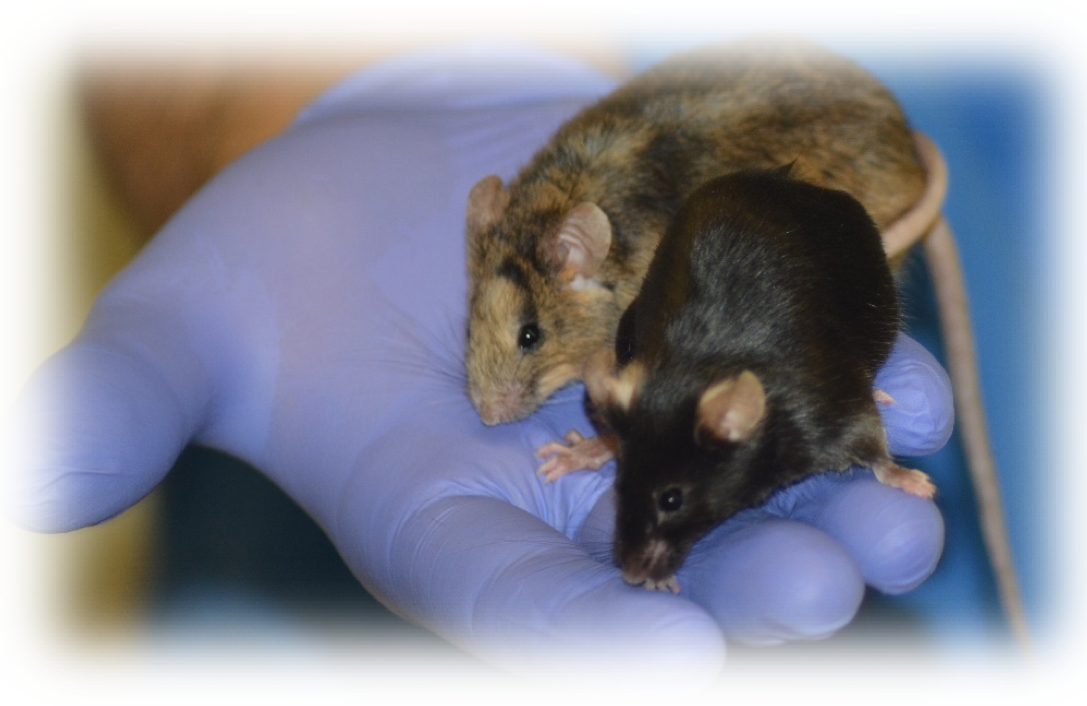Genetically Engineered Mouse Models
Genetically modified mouse models are one of the most powerful tool in the scientific areas, such as cancer, drug-induced immunotoxicity and development biology. Genetically engineered mice are constructed to more precisely model human phenotypes and pathologies, giving researchers a better way to explore disease mechanisms and drug discovery. Nowadays it is possible remove, replace and insert any kind of sequence in the mouse genome. Biogem offers quality custom generation of a wide range of mouse models, using diverse techniques including homologous recombination in embryonic stem (ES) cells, CRISPR/Cas9 system and a variety of advanced technologies of molecular biology, enabling you to obtain the precise models you need.
List of Services
 |
Targeting strategy design |
 |
|
|---|---|---|---|
 |
Targeting vector construction |
||
 |
CRISPR/Cas9 system strategy |
||
 |
Electroporation of mouse embryonic stem (ES) cells |
||
 |
Assessing ES cells for homologous recombination |
||
 |
Generating chimeric mice by morula or blastocyst injection |
||
 |
Assessing germline transmission |
||
 |
Breeding chimeric mice to heterozygosity |
Our services can be ordered together or individually depending on the investigator's needs. Moreover, we can generate chimeras also performing microinjection of ES clones obtained by consortia such as KOMP and EUCOMM.
Types of mouse models:
- Constitutive knock out
A Constitutive Knock Out will eliminate the function of the targeted gene in all cells throughout development and adulthood. Traditional knock-out involves deleting or disabling both copies of a specific gene. It is indicated for study of gene function, drug and therapeutic development and disease research.
Conditional knock-out involves deleting or disabling a gene in only a particular organ, tissue, or cell type or only during a certain development stage.These system utilizes the Cre-lox system. This is a site-specific DNA recombination through the interaction of the Cre recombinase enzyme and loxP sites in the DNA strand: a mouse bearing the recombinase-specific sites is bred with a mouse expressing the recombinase. The tissue-specific expression of the recombinase allows the inactivation of the gene of interest only in the tissue where the recombinase is expressed. Conditional knock-outs provide a temporal and tissue-specific gene knock-out control while allowing the mouse model to mature under the normal operating role of the gene of interest.
- Constitutive/Conditional Point mutation
This approach involves the introduction of one or more point mutations anywhere in the target gene, to analyse the effect of SNPs. This method can also be combined with conditional approaches, providing a temporal and tissue-specific gene mutation.
- Rosa26 knock-in
This approach, called "knock-in", is based on targeted insertion of the transgene in a well-characterized, transcriptionally active locus in the mouse genome, such as ROSA26 locus, with multiple advantages over the pro-nuclear injection approach.
- Humanization
Humanization, based on Knock-in approach, allows for in vivo testing of compounds and antibodies against human proteins in the mouse. This is achieved by the replacement of the murine gene with the human counterpart, placing the gene in the same transcriptional context as the murine gene.
This targeting vector allows the introduction of a reporter gene to follow gene expression
- Constitutive/Inducible Cre- or FLP-driver mouse strains
The conditional approaches based on the Cre/lox system need mouse strains expressing the recombinase in a tissue- and time-specific manner, to make this models it is necessary the generation of a mouse that express Cre recombinase (constitutive or inducible) under the control of a specific promoter.
Other services:
- Drafting for Ministerial authorization.
- Genotyping.
- In vivo Cre or Flp modification.
- Mouse model phenotypical characterization.
- Mouse sample collection.
- Sperm freezing cryopreservation.
- In vivo sperm fertilization (IVF).
- SPF mice riderivation.
